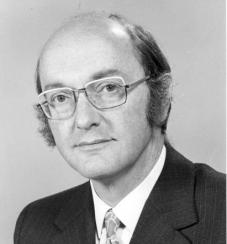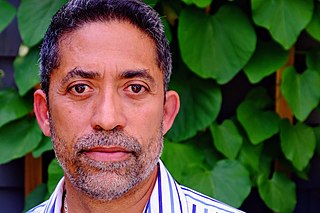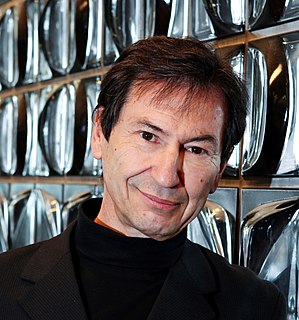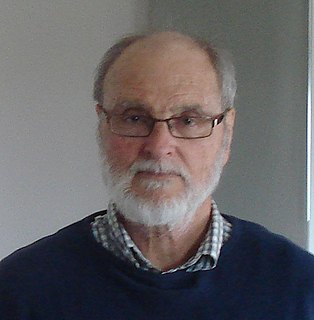
The Internet Engineering Task Force (IETF) is a standards organization for the Internet and is responsible for the technical standards that comprise the Internet protocol suite (TCP/IP). It has no formal membership roster or requirements and all its participants are volunteers. Their work is usually funded by employers or other sponsors.

Sir Timothy John Berners-Lee, also known as TimBL, is an English computer scientist best known as the inventor of the World Wide Web. He is a Professorial Fellow of Computer Science at the University of Oxford and a professor at the Massachusetts Institute of Technology (MIT). Berners-Lee proposed an information management system on 12 March 1989, then implemented the first successful communication between a Hypertext Transfer Protocol (HTTP) client and server via the Internet in mid-November.

WorldWideWeb is the first web browser and web page editor. It was discontinued in 1994. At the time it was written, it was the sole web browser in existence, as well as the first WYSIWYG HTML editor.

ViolaWWW is a discontinued browser, the first to be popular for the World Wide Web (WWW). It was first released in 1991/1992 for Unix and acted as the recommended browser at CERN, where the WWW was invented, but eventually lost its position as most frequently used browser to Mosaic.

Donald Watts Davies, was a Welsh computer scientist who was employed at the UK National Physical Laboratory (NPL).

The Automatic Computing Engine (ACE) was a British early electronic serial stored-program computer designed by Alan Turing. It was based on the earlier Pilot ACE. It led to the MOSAIC computer, the Bendix G-15, and other computers.

Robert Cailliau is a Belgian informatics engineer, computer scientist and author who proposed the first (pre-www) hypertext system for CERN in 1987 and collaborated with Tim Berners-Lee on the World Wide Web from before it got its name. He designed the historical logo of the WWW, organized the first International World Wide Web Conference at CERN in 1994 and helped transfer Web development from CERN to the global Web consortium in 1995. Together with Dr. James Gillies, Cailliau wrote How the Web Was Born, the first book-length account of the origins of the World Wide Web.

The Line Mode Browser is the second web browser ever created. The browser was the first demonstrated to be portable to several different operating systems. Operated from a simple command-line interface, it could be widely used on many computers and computer terminals throughout the Internet. The browser was developed starting in 1990, and then supported by the World Wide Web Consortium (W3C) as an example and test application for the libwww library.

Alan Emtage is a Bajan computer scientist who conceived and implemented the first version of Archie, a pre-Web Internet search engine for locating material in public FTP archives. It is widely considered the world's first Internet search engine.

Nicola Pellow is an English mathematician and information scientist who was one of the nineteen members of the WWW Project at CERN working with Tim Berners-Lee. She joined the project in November 1990, while an undergraduate maths student enrolled on a sandwich course at Leicester Polytechnic. Pellow recalled having little experience with programming languages, "... apart from using a bit of Pascal and FORTRAN as part of my degree course."
Dan Connolly is an American computer scientist who was closely involved with the creation of the World Wide Web as a member of the World Wide Web Consortium (W3C).

The World Wide Web is a global information medium which users can access via computers connected to the Internet. The term is often mistakenly used as a synonym for the Internet, but the Web is a service that operates over the Internet, just as email and Usenet do. The history of the Internet and the history of hypertext date back significantly farther than that of the World Wide Web.

Erwise is a discontinued pioneering web browser, and the first available with a graphical user interface.

Jonathan Andrew Crowcroft is the Marconi Professor of Communications Systems in the Department of Computer Science and Technology, University of Cambridge and the chair of the programme committee at the Alan Turing Institute.

The First International Conference on the World-Wide Web was the first-ever conference about the World Wide Web, and the first meeting of what became the International World Wide Web Conference. It was held on May 25 to 27, 1994 in Geneva, Switzerland. The conference had 380 participants, who were accepted out of 800 applicants. It has been referred to as the "Woodstock of the Web".
ENQUIRE was a software project written in 1980 by Tim Berners-Lee at CERN, which was the predecessor to the World Wide Web. It was a simple hypertext program that had some of the same ideas as the Web and the Semantic Web but was different in several important ways.
SGMLguid, also known as "CERN SGML", "Waterloo based SGML", and "Waterloo SGML", was an early SGML application developed and used at CERN between 1986 and 1990. It served as a model of the earliest HTML specifications.

François Flückiger is a computer scientist who works at CERN. He was selected for induction in 2013 in the Internet Hall of Fame.

Robert William Doran HFNZCS was a New Zealand-based computer scientist and historian of computing. He was Professor Emeritus of Computer Science at the University of Auckland, New Zealand.















